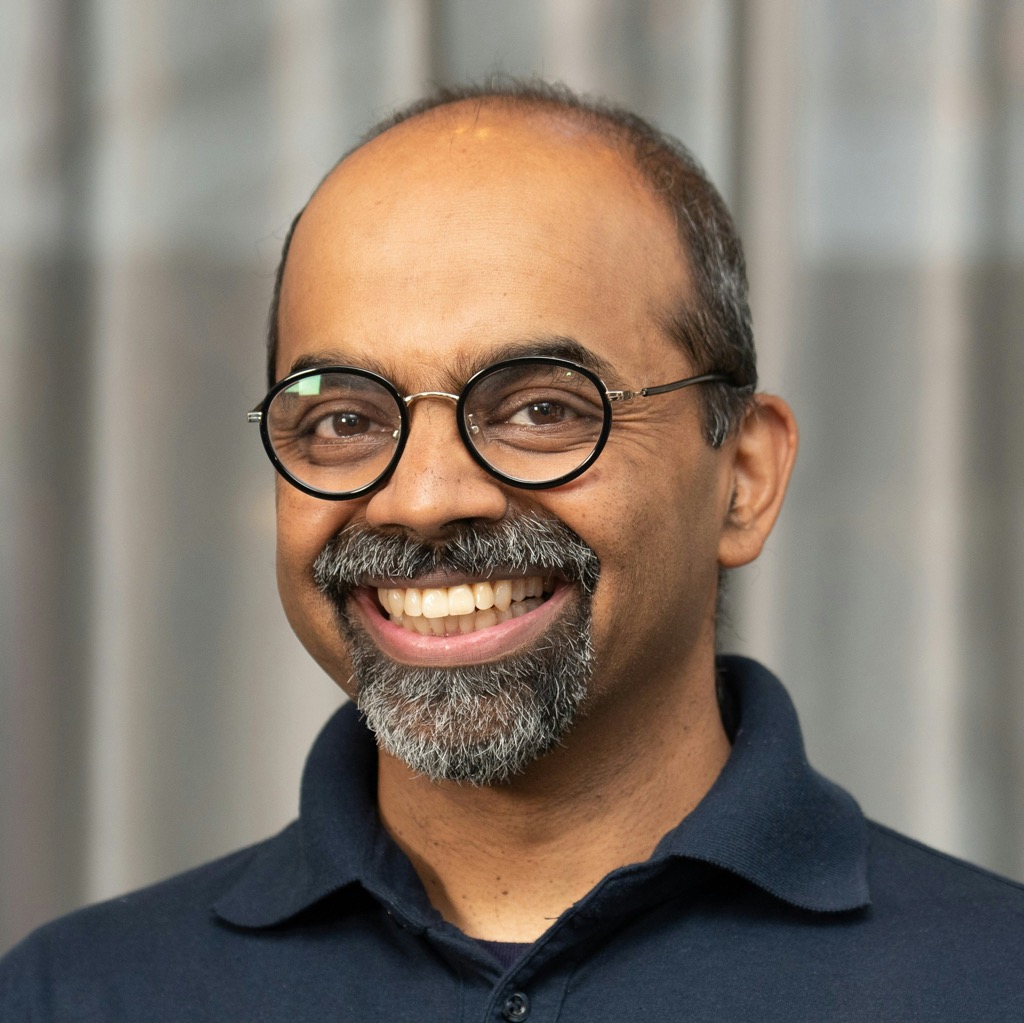Program
Keynote Speakers

L Mahadevan, FRS
de Valpine Professor of Applied Mathematics, Professor of Organismic and Evolutionary Biology, Professor of Physics, Faculty Dean, Mather House, Harvard University
L. Mahadevan is the Lola England de Valpine Professor of Applied Mathematics, Physics, and Organismic and Evolutionary Biology at Harvard University, where he also serves as a Faculty Dean of Mather House, living and learning with a community of 400+ students. Following a PhD from Stanford in 1995, he was on the faculty at MIT and then a Fellow of Trinity and the inaugural Schlumberger Professor of Complex Physical Systems at Cambridge University before moving to Harvard in 2003. His interests are broadly in the study of phenomena at the human scale that are easy to observe, yet not always easy to explain. A common aim is to get at a qualitative understanding using quantitative methods, and get at general principles, if there be such, from answers to specific questions inspired by the patterns of shape and flow of inanimate matter on scales ranging from the supramolecular to the planetary, and the dynamics of sentient living matter that can self-organize, perceive and act. Examples include the mathematics underlying art forms such as origami and its cousins, the physics underlying unusual musical instruments such as the steel pan and the musical saw, the biophysics of cells and tissues and the basis for self-organized morphogenesis, and the functional ethology and behavior of super-organisms from bacteria to bugs. His work in science has been recognized by a number of awards: he is a MacArthur Fellow, a Fellow of the Royal Society of London, a member of the American Academy of Arts and Sciences and a Simons Investigator.
(Bio)physics of body building: gastrulation, elongation, segmentation, ...
I will describe how simple geometrical ideas and physical principles associated with active growth and flow are beginning to help illuminate multicellular tissue morphogenesis in laying out the body plan, using three common motifs, with variations across organisms: gastrulation, elongation, and segmentation. Combining experiments and theory allows us to link molecular genetics to morphogenesis in a developing organism and construct evolutionary phase diagrams across organisms, sharpening the Darwinian question of how “endless forms most beautiful and most wonderful have been, and are being, evolved.”

Hanna Mikkola, MD, PhD
Department of Molecular, Cell, and Developmental Biology, Broad Stem Cell Research Center, and Jonsson Comprehensive Cancer Center, University of California Los Angeles
Dr. Hanna Mikkola is a Professor of Molecular, Cell, and Developmental Biology at UCLA, and a member of the Broad Stem Cell Research Center and Jonsson Comprehensive Cancer Center. Her interest in hematology and blood cell development began during medical school at the University of Helsinki, where she completed a Ph.D. on genetic defects in Factor XIII deficiency. She pursued postdoctoral research at Lund University, developing lentiviral tools for stem cell manipulation, and later at Harvard Medical School, where she identified the placenta as a niche for hematopoietic stem cells (HSCs). Since joining UCLA in 2005, Dr. Mikkola’s lab has focused on mechanisms controlling HSC development and self-renewal, and dysregulation of these processes in culture and leukemias. Her research integrates human developmental and postnatal hematopoietic tissues, human pluripotent stem cells, and mouse models with state-of-the-art molecular biology and omics technologies—including single-cell, spatial, and long-read transcriptomic and epigenomic approaches. She also co-directs the JCCC’s Epigenetics, RNA, and Gene Regulation Program and teaches undergraduates about stem cell biology.
Dissecting human hematopoietic stem cell development, self-renewal and transformation
Hematopoietic stem cells (HSCs) are the only cells within the hematopoietic system capable of long-term self-renewal and multilineage reconstitution. A major challenge in regenerative medicine has been the generation of fully functional human HSCs from pluripotent stem cells (PSCs) in vitro. HSC self-renewal is established through a stepwise developmental process that begins with the specification of arterial hemogenic endothelium, followed by the emergence of nascent HSCs from the dorsal aorta, and continues with progressive maturation stages that confer the ability to engraft and sustain hematopoiesis in the bone marrow.
Model organisms such as mouse and zebrafish have been instrumental in delineating these key developmental transitions. However, due to species-specific differences, it is essential to define the corresponding processes in human development. To this end, we generated a comprehensive single-cell RNA sequencing (scRNA-seq) atlas of human developmental hematopoiesis, spanning from hemogenic endothelium to birth. This resource enabled direct comparisons between PSC-derived hematopoietic cells and their in vivo counterparts, uncovering crucial insights that recently facilitated the generation of transplantable HSCs from PSCs—though still with limited efficiency.
Our current research focuses on characterizing the unique features of fetal hematopoietic niches to promote the maturation of PSC-derived HSCs to stages equivalent to the fetal liver and bone marrow, with the ultimate goal of improving engraftment efficiency and creating robust in vitro platforms to model blood disorders with prenatal origins.
We apply these models, along with single-cell multi-omics analyses of developmental tissues, to investigate the ontogeny of childhood leukemias such as Down syndrome-associated myeloid leukemia (ML-DS). These studies have begun to reveal how trisomy 21 alters fetal hematopoiesis, predisposing to transient abnormal myelopoiesis (TAM) and progression to ML-DS. Our ongoing work aims to identify stage-specific biomarkers of disease evolution and provide mechanistic insights that may inform early intervention and prevention strategies.
19th IZFC Program
See the 19th IZFC Program At-A-Glance here!
See the presentations and speakers in each session here.
See the Oral Abstract Book here!
See the Poster Abstract Book here!

